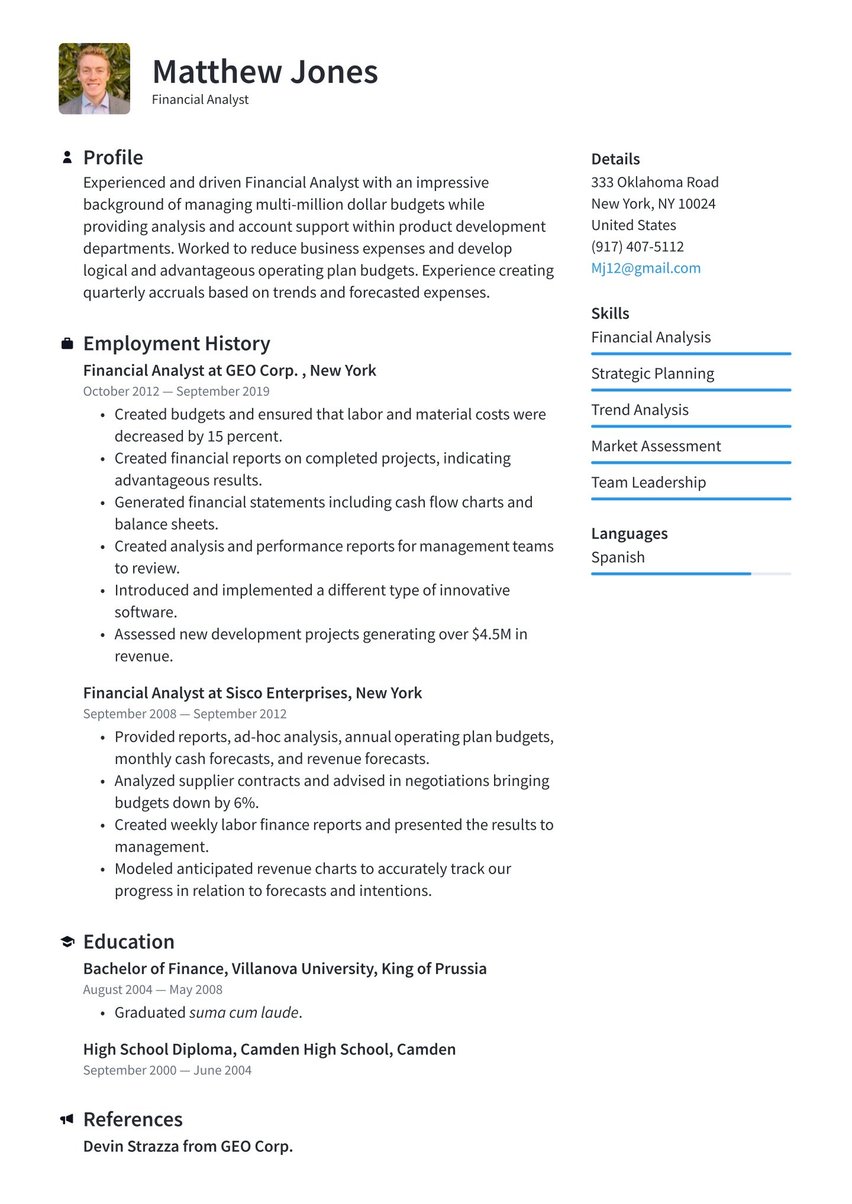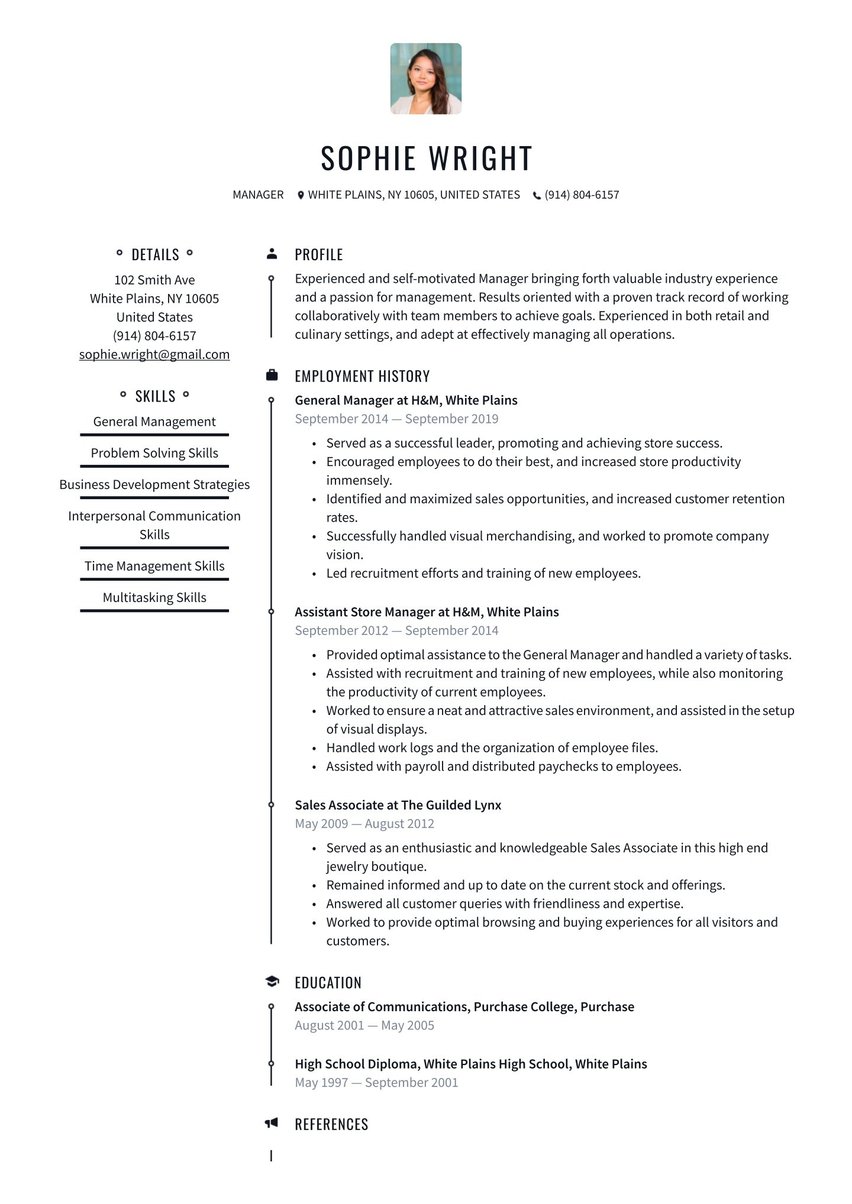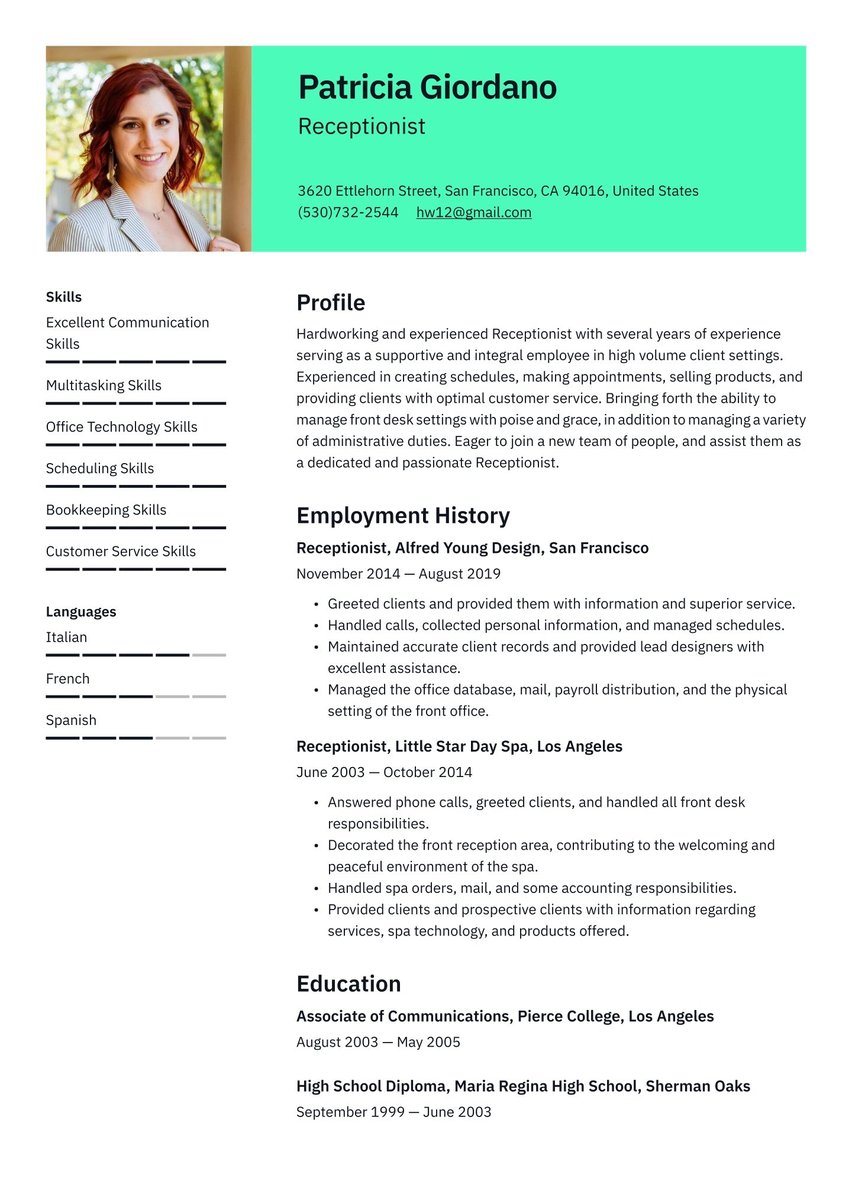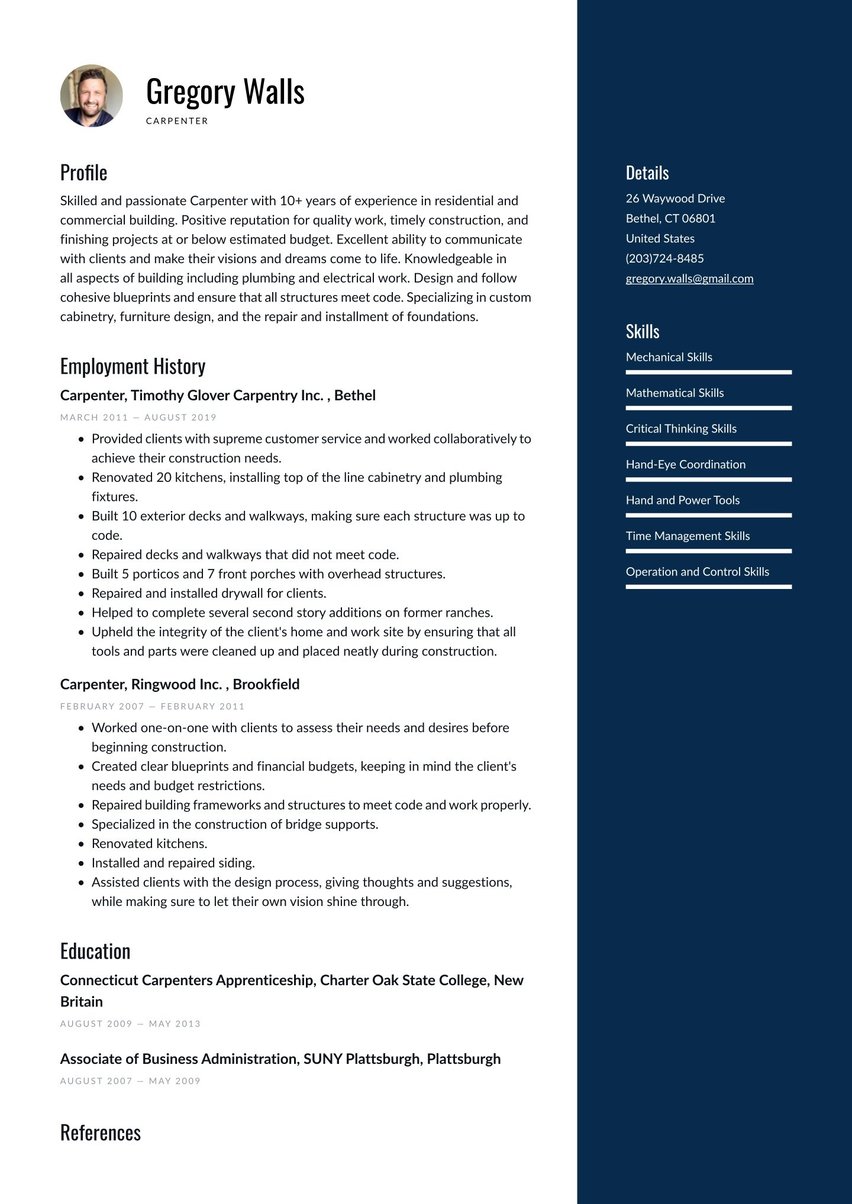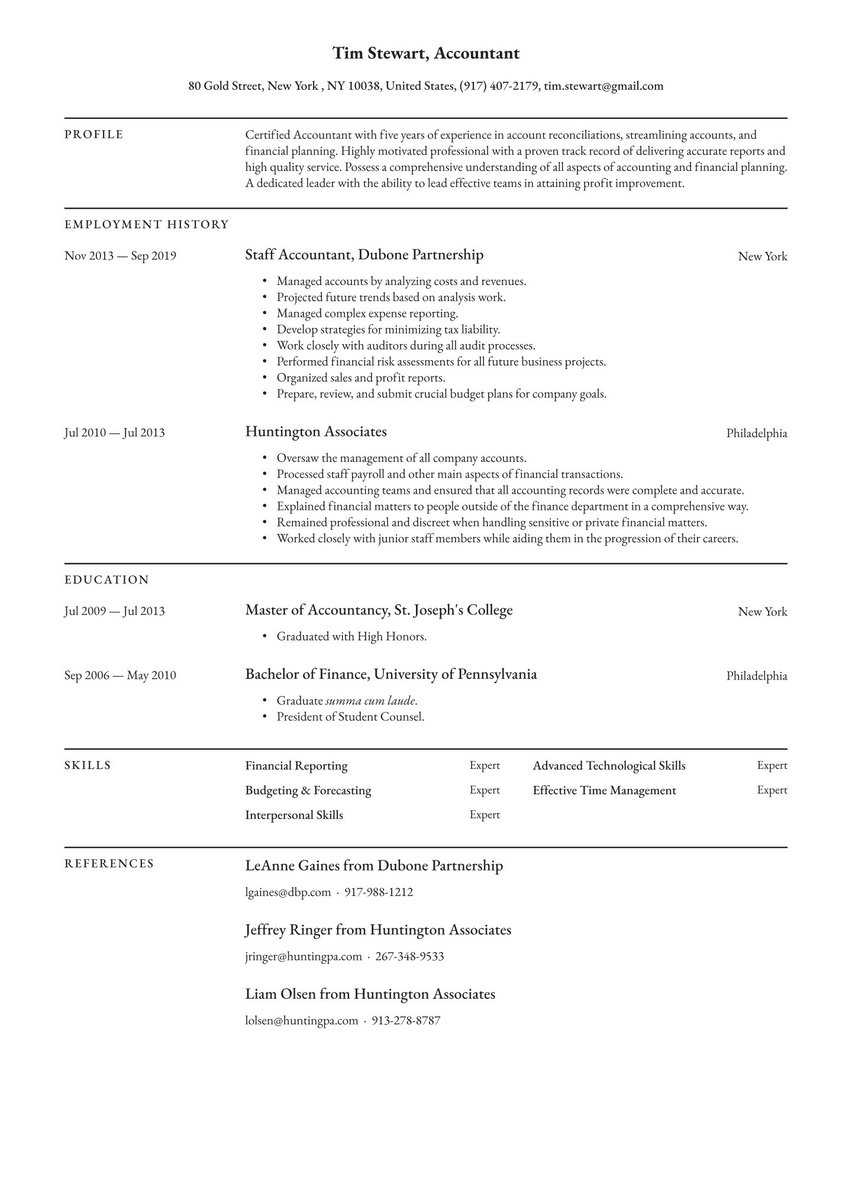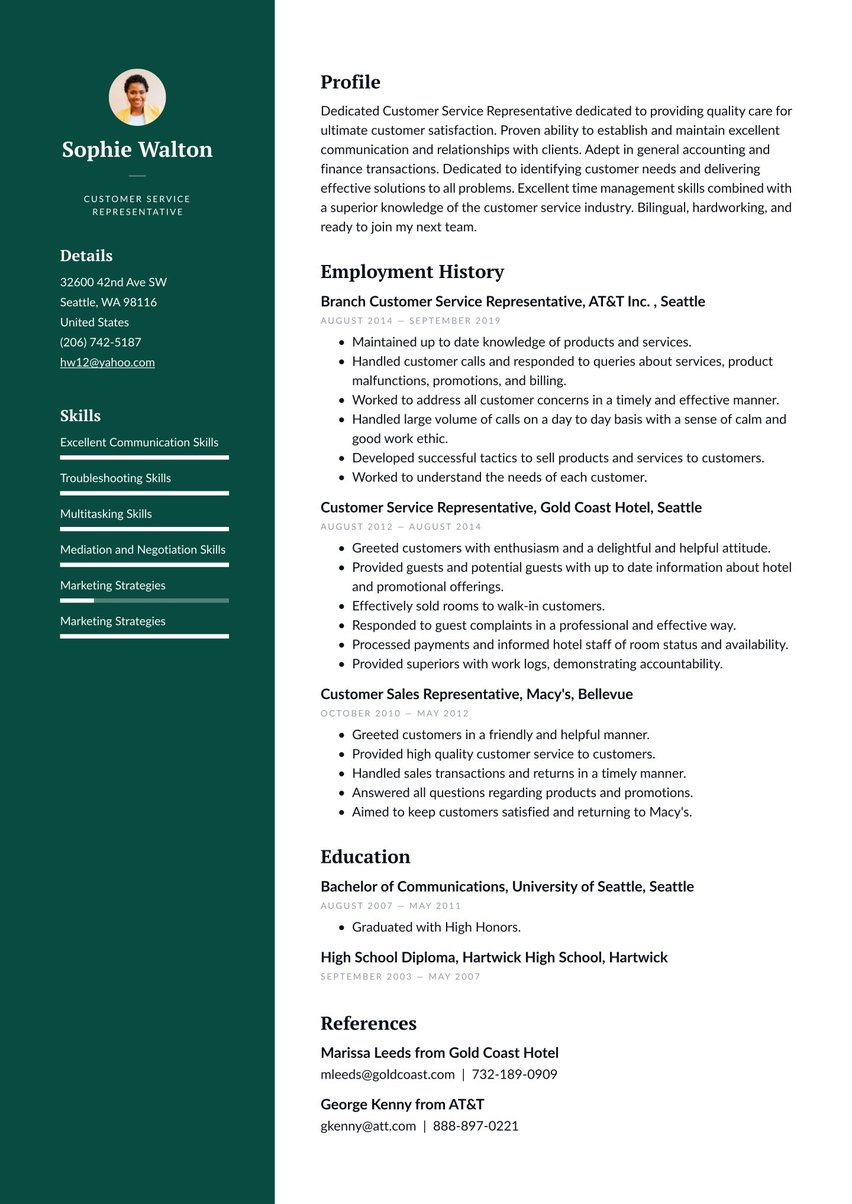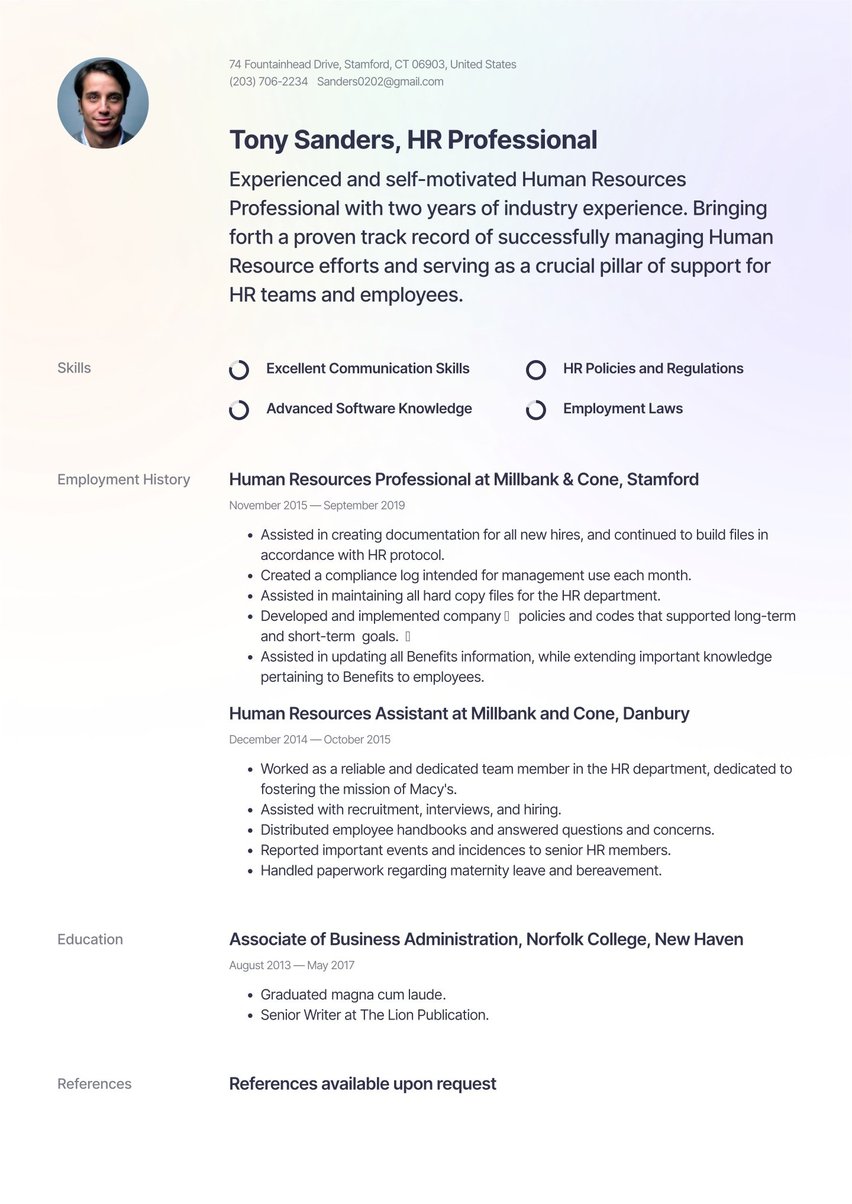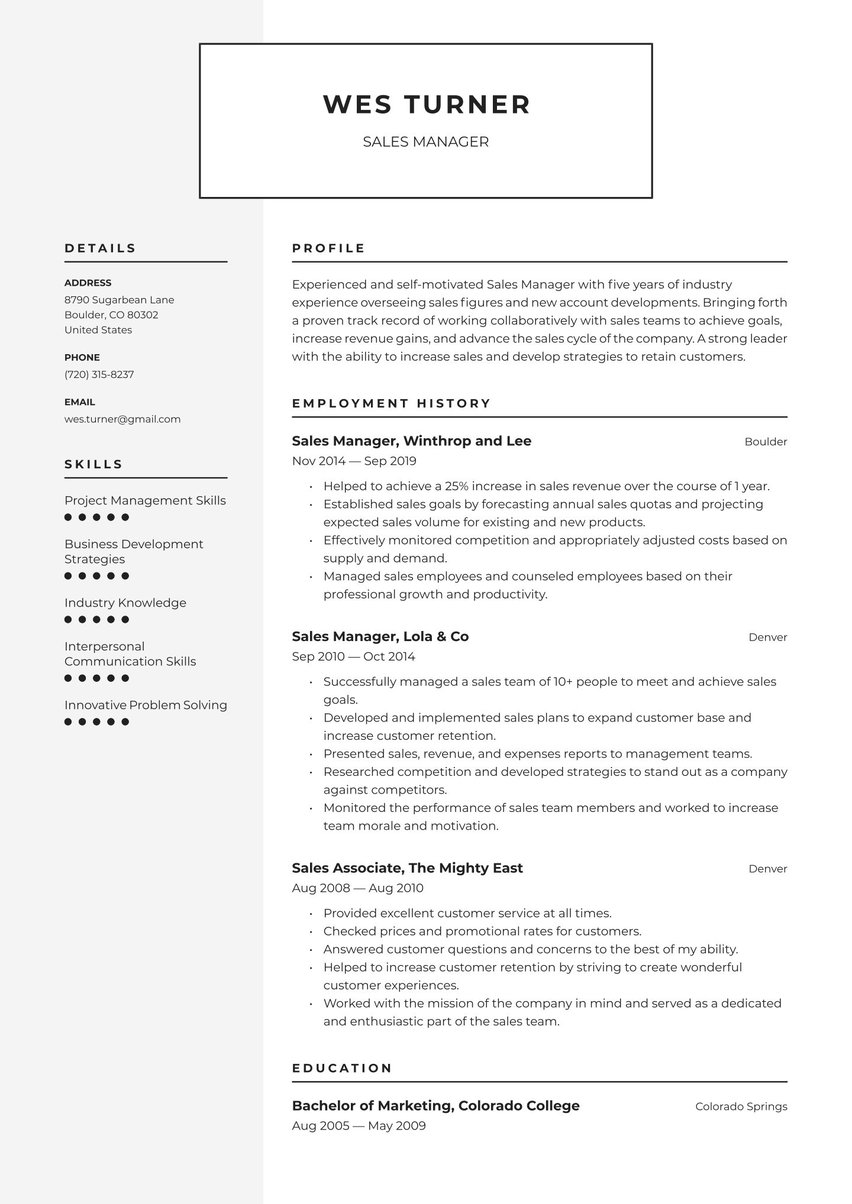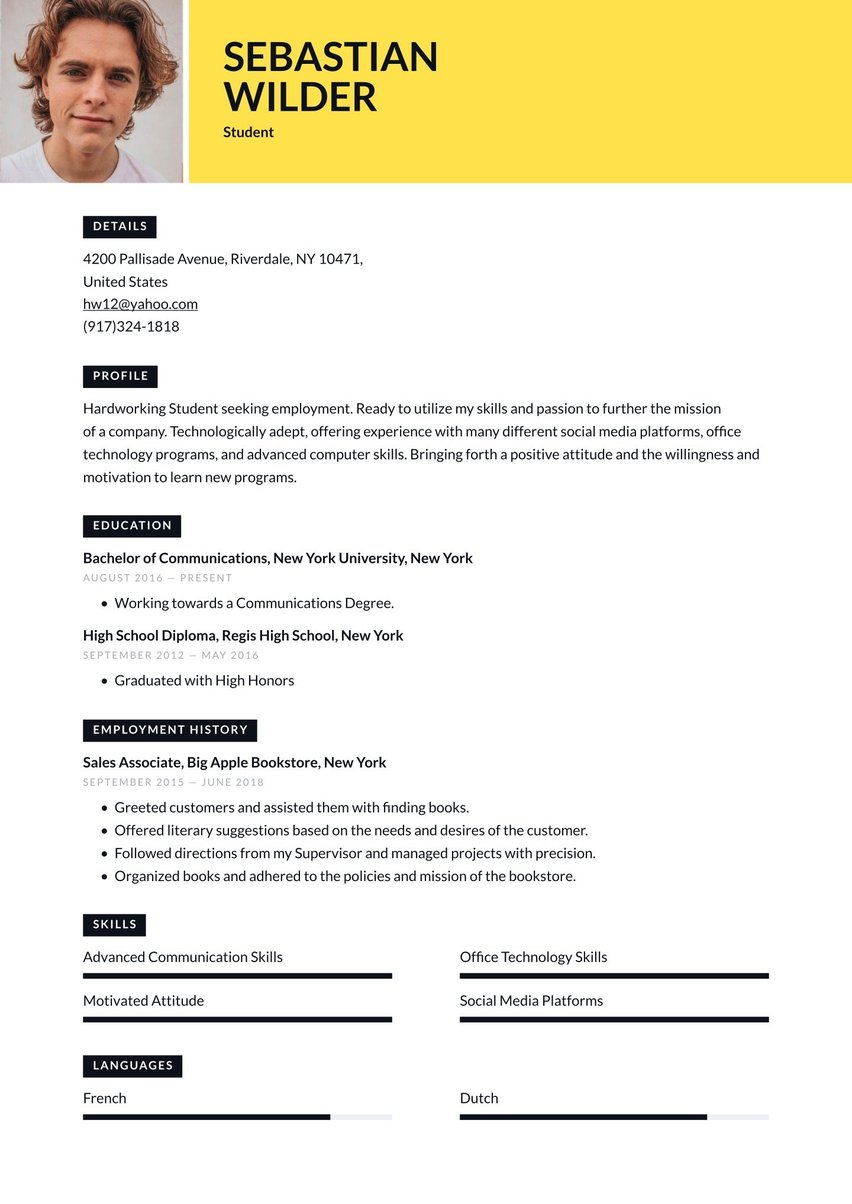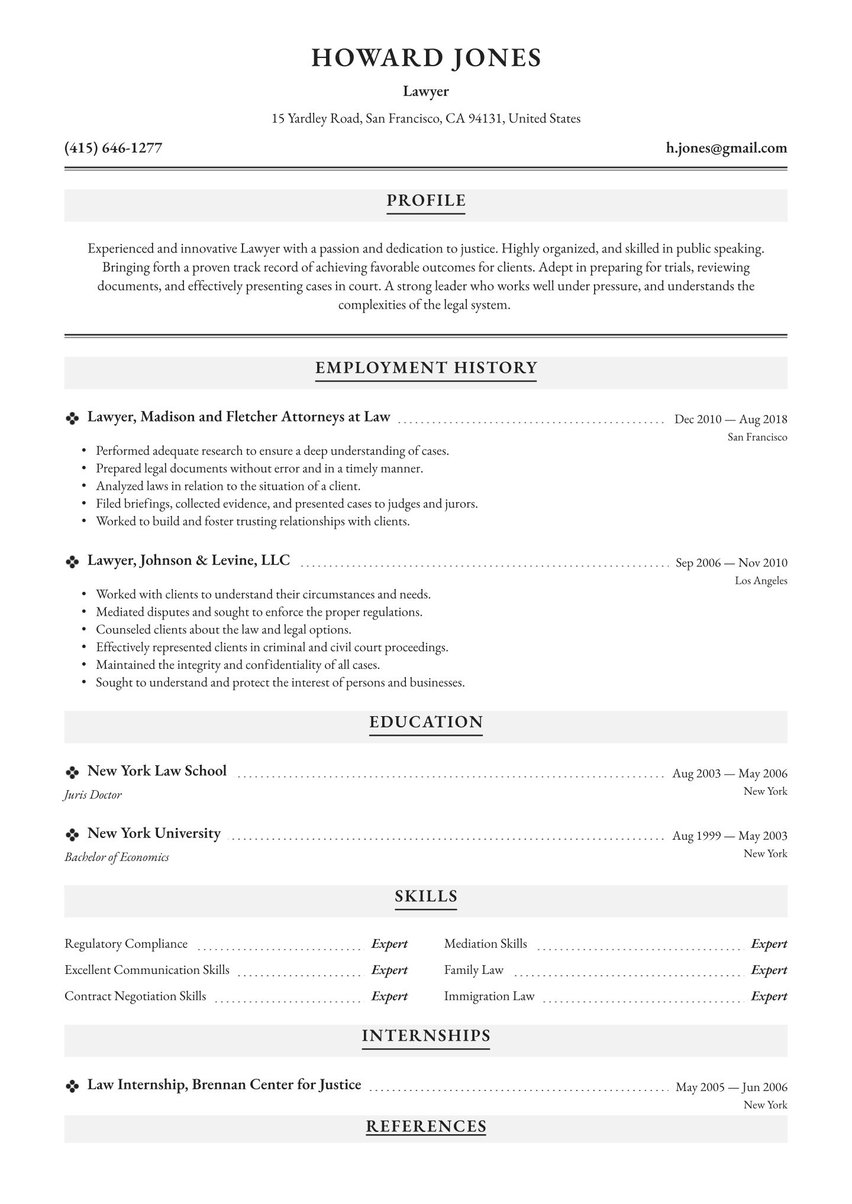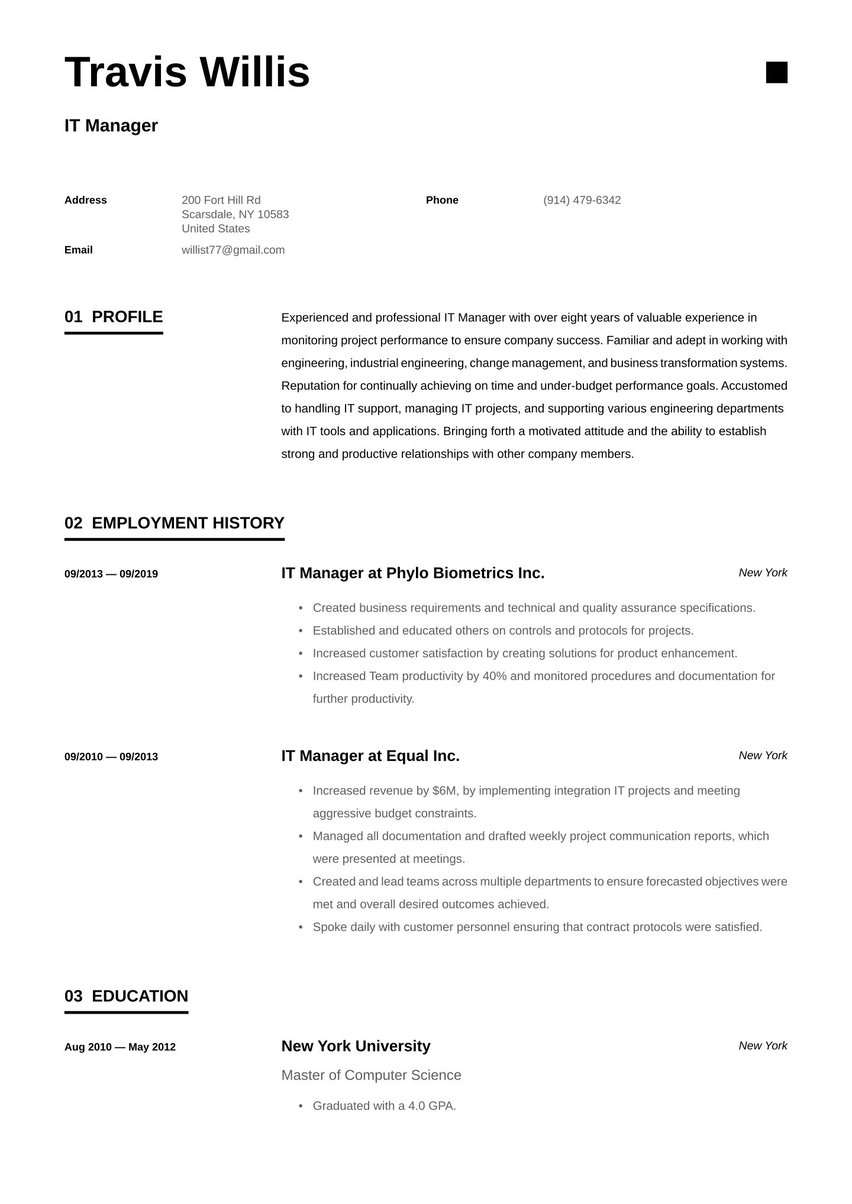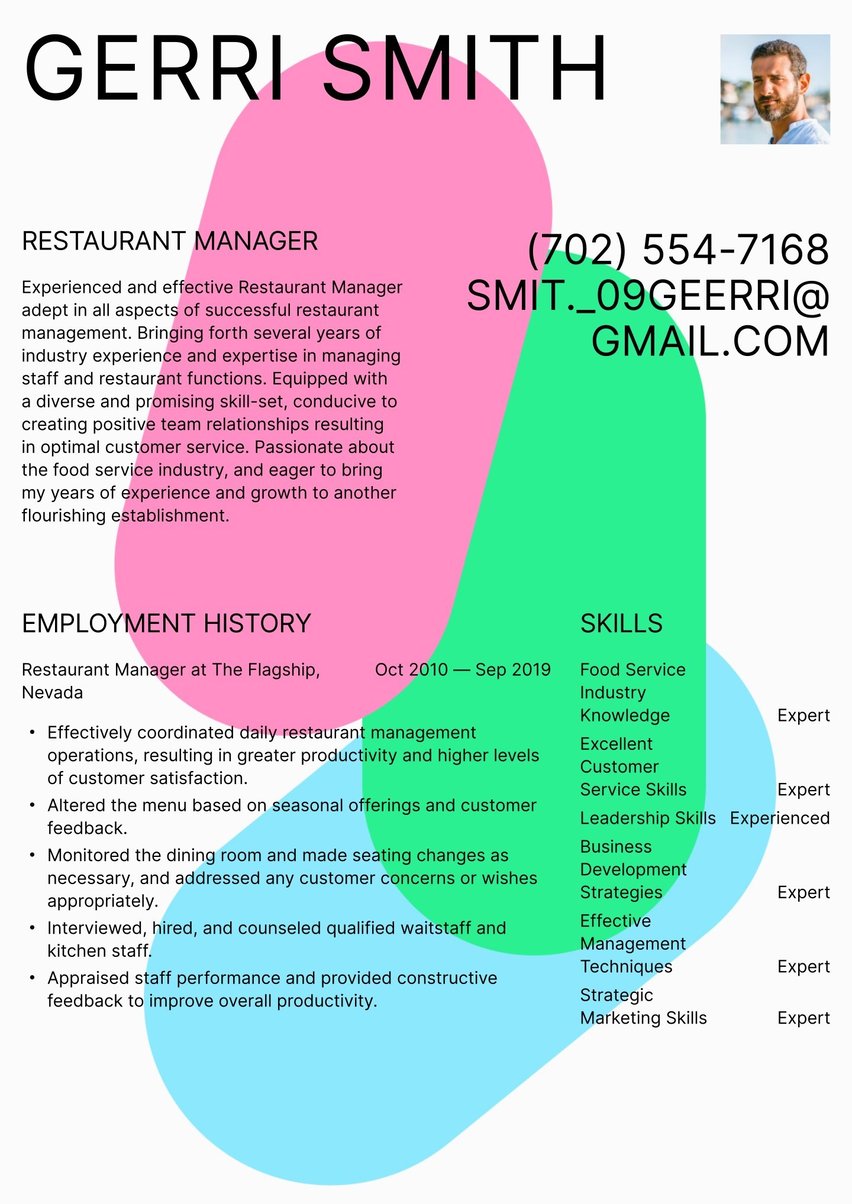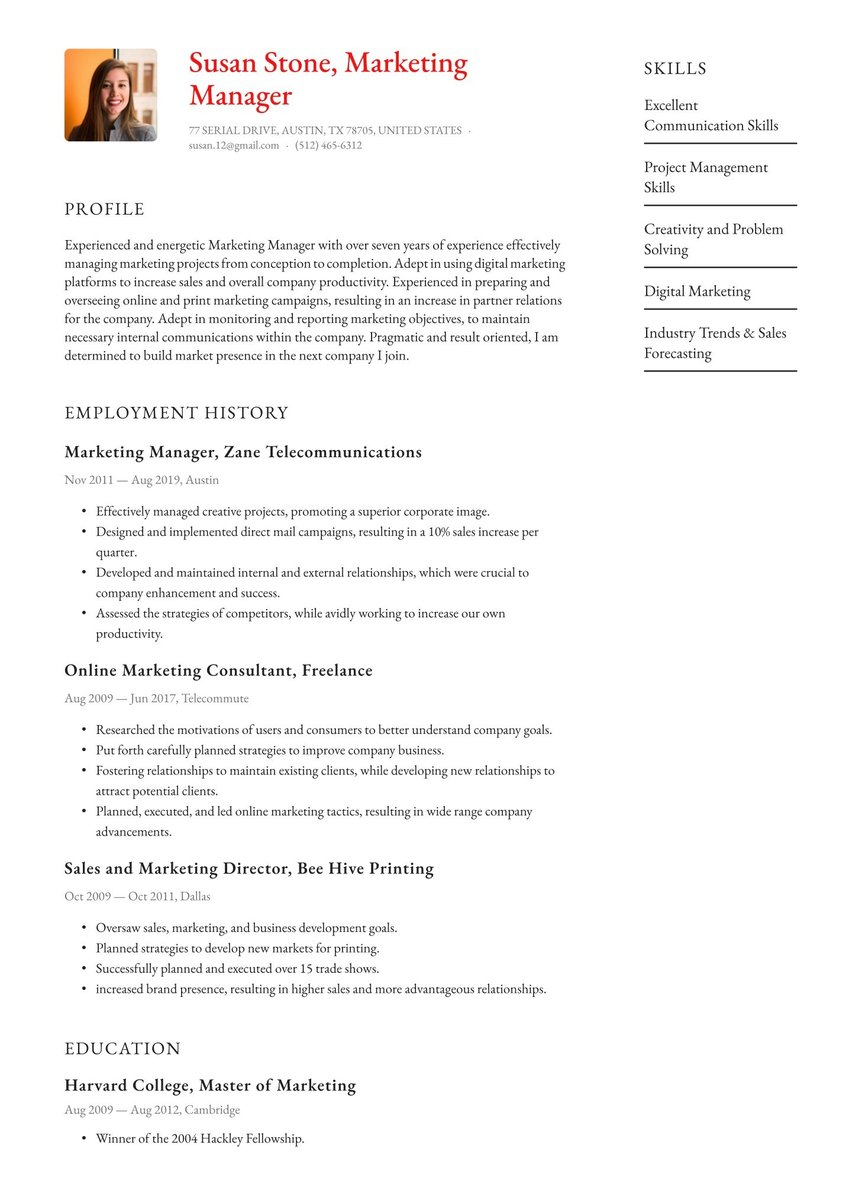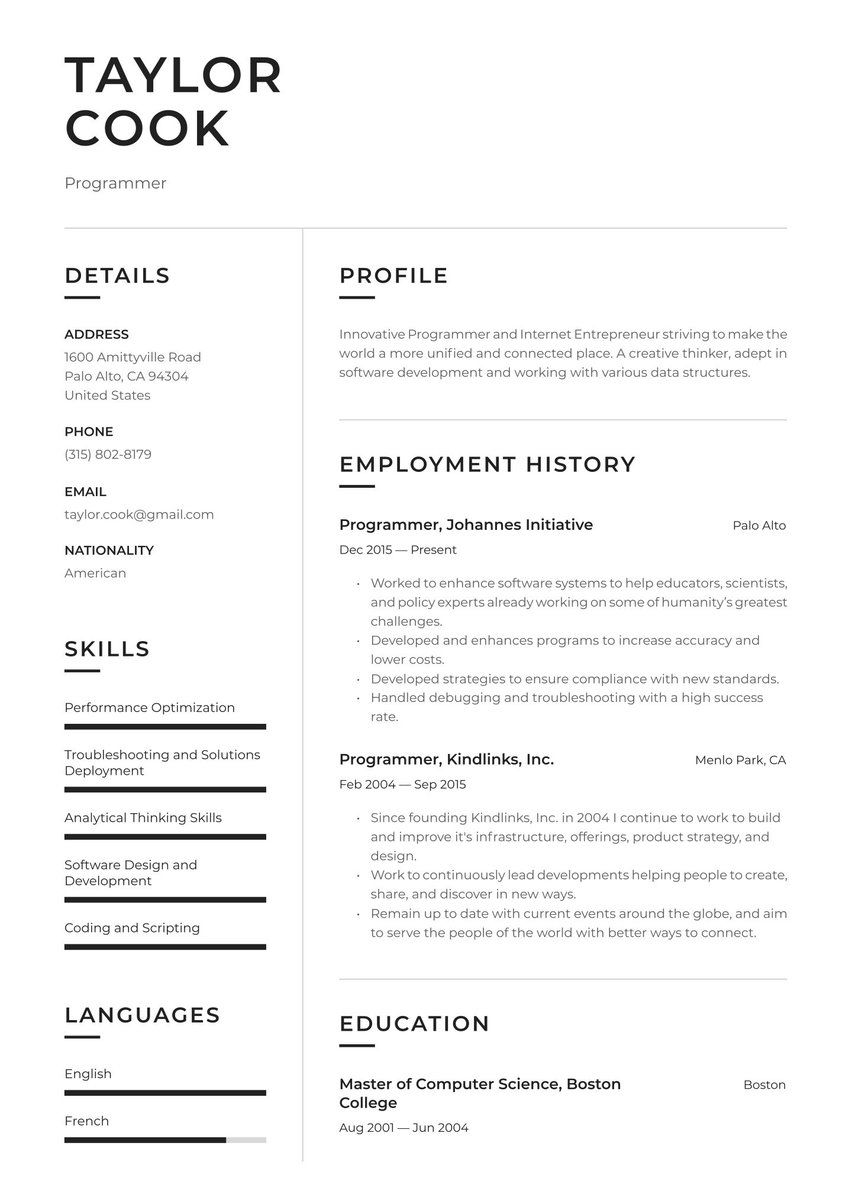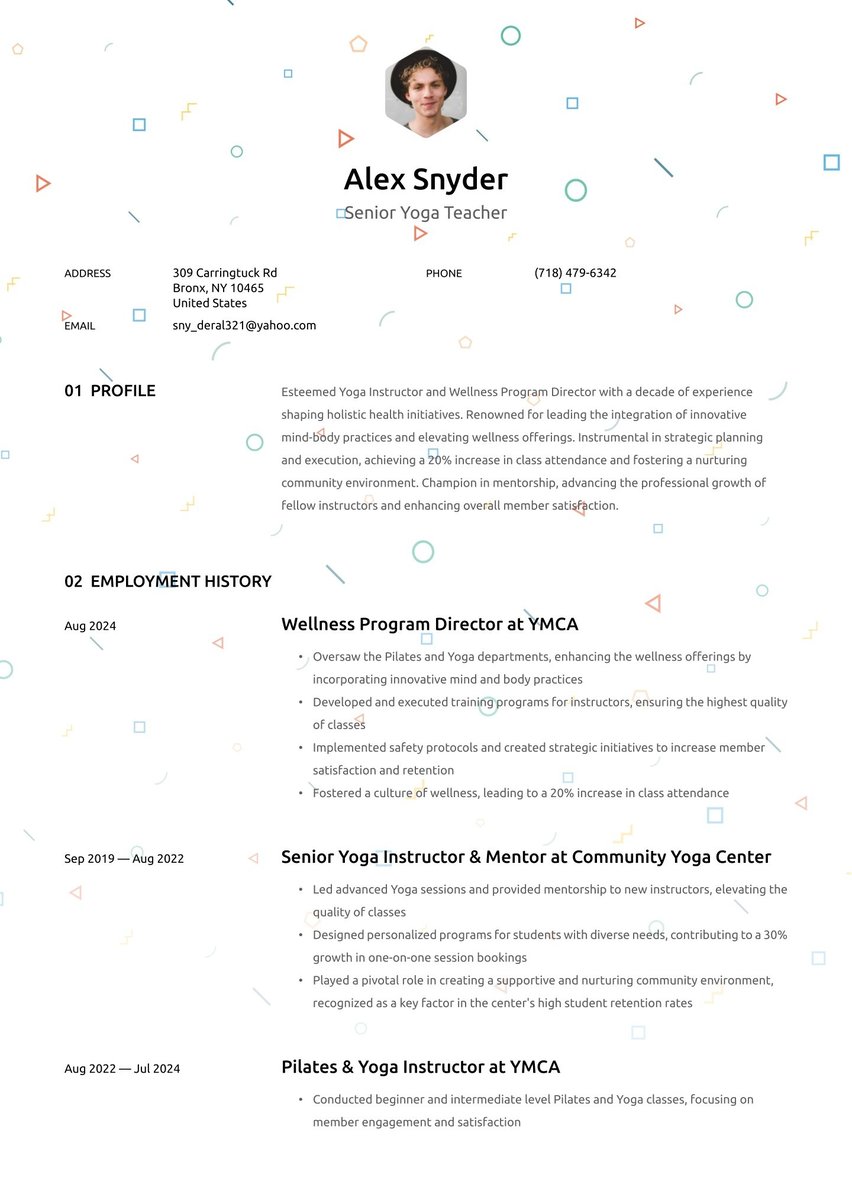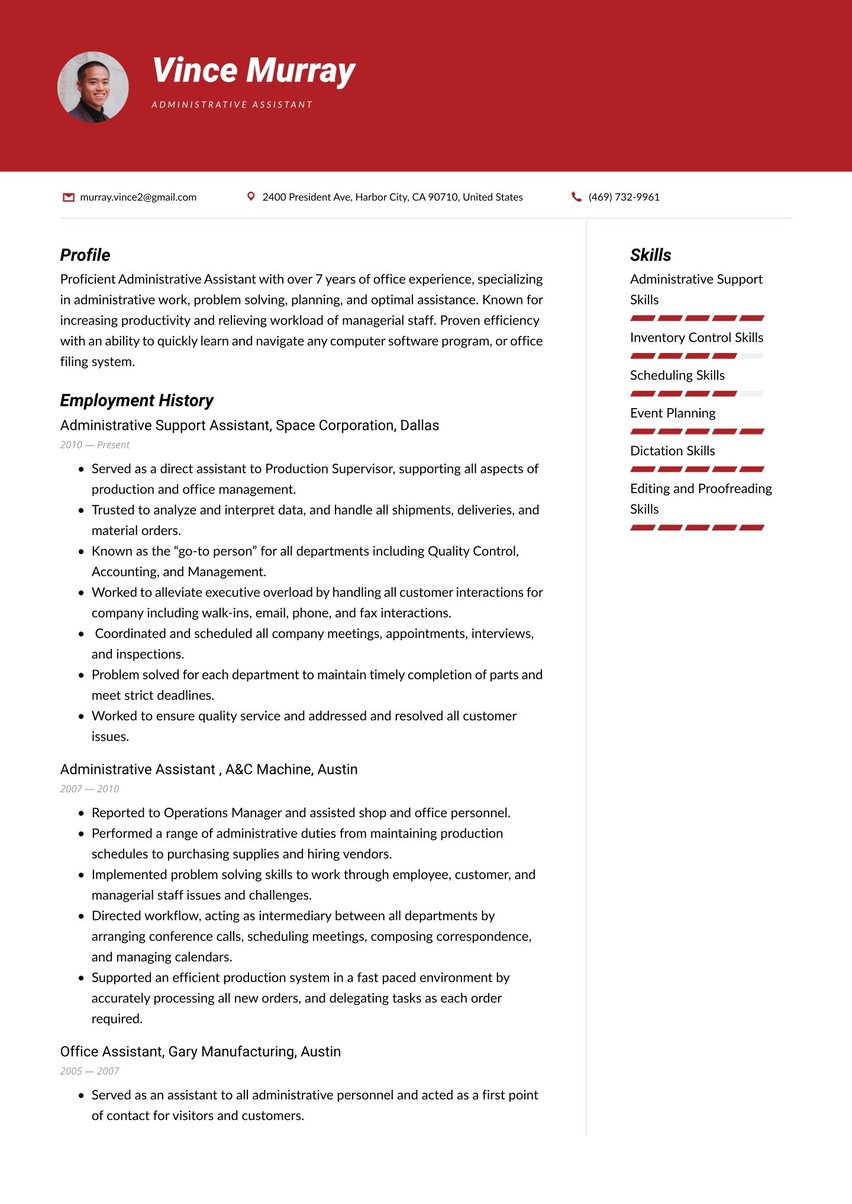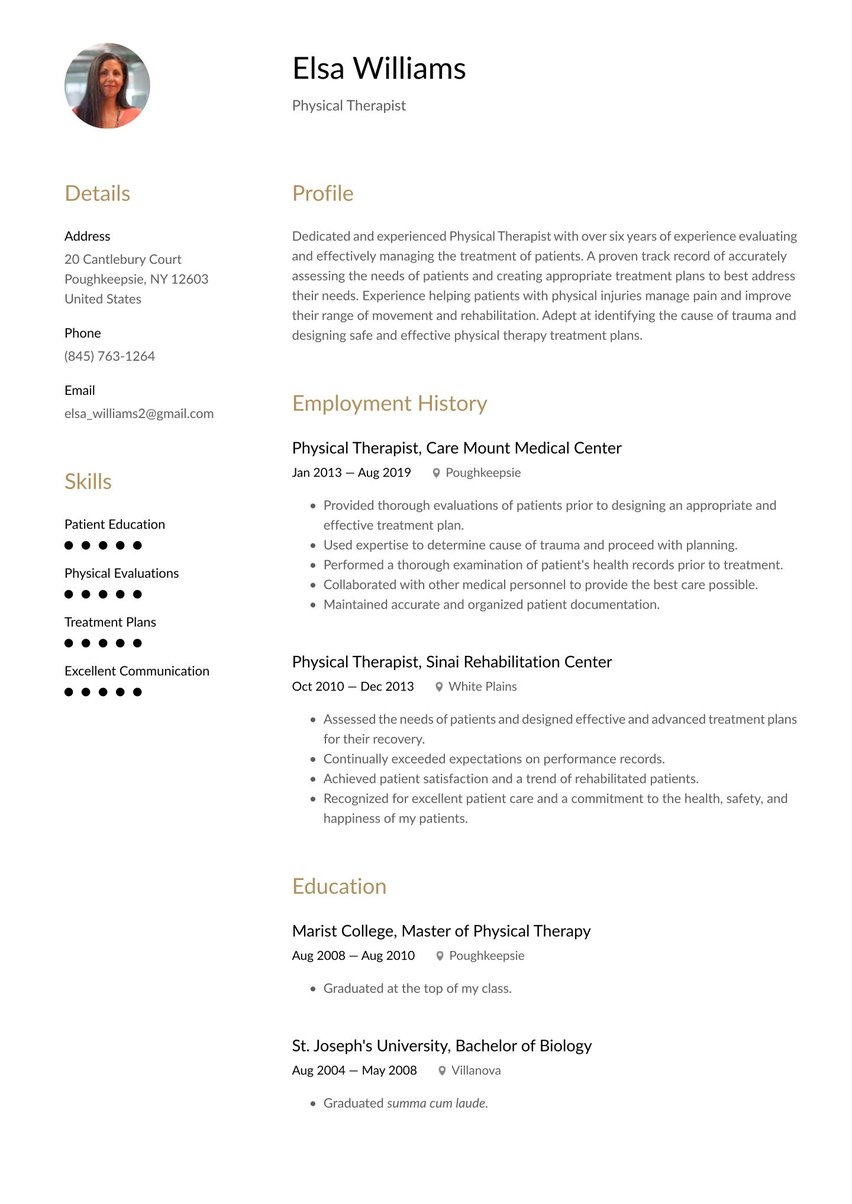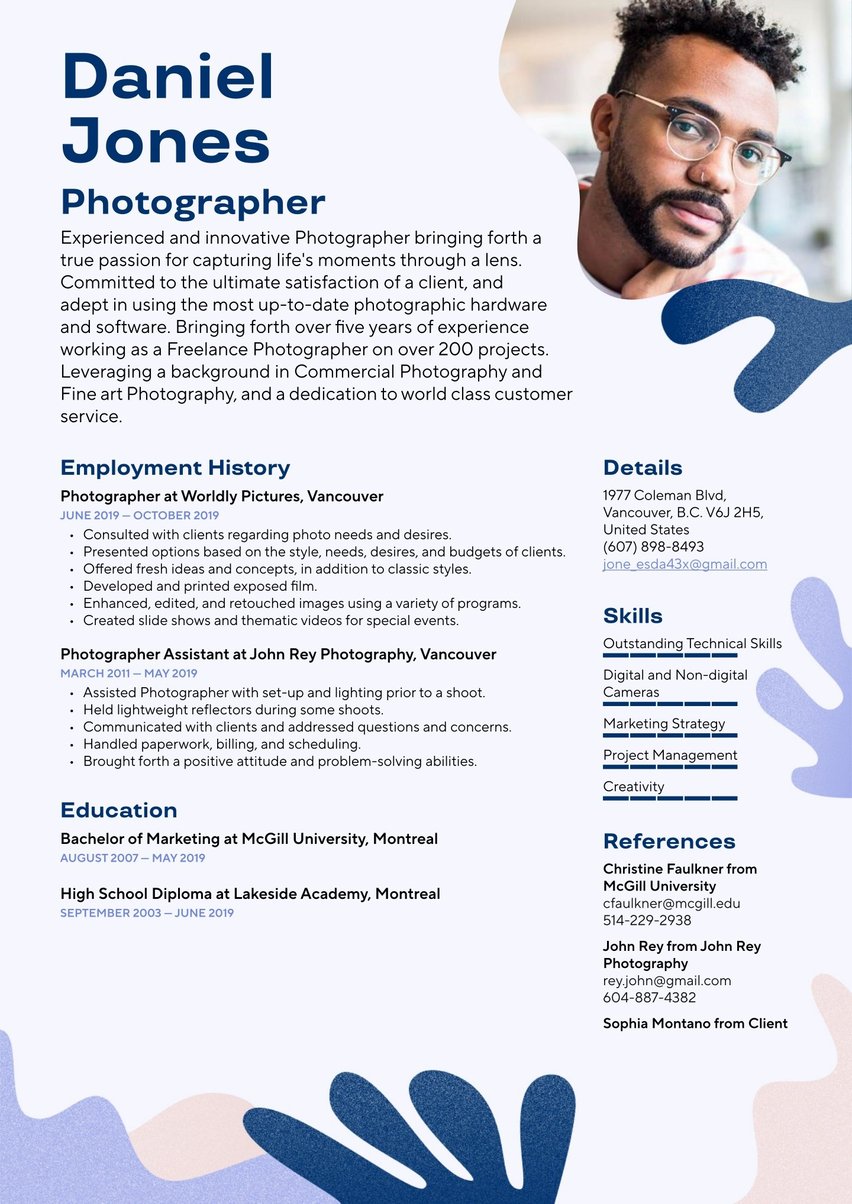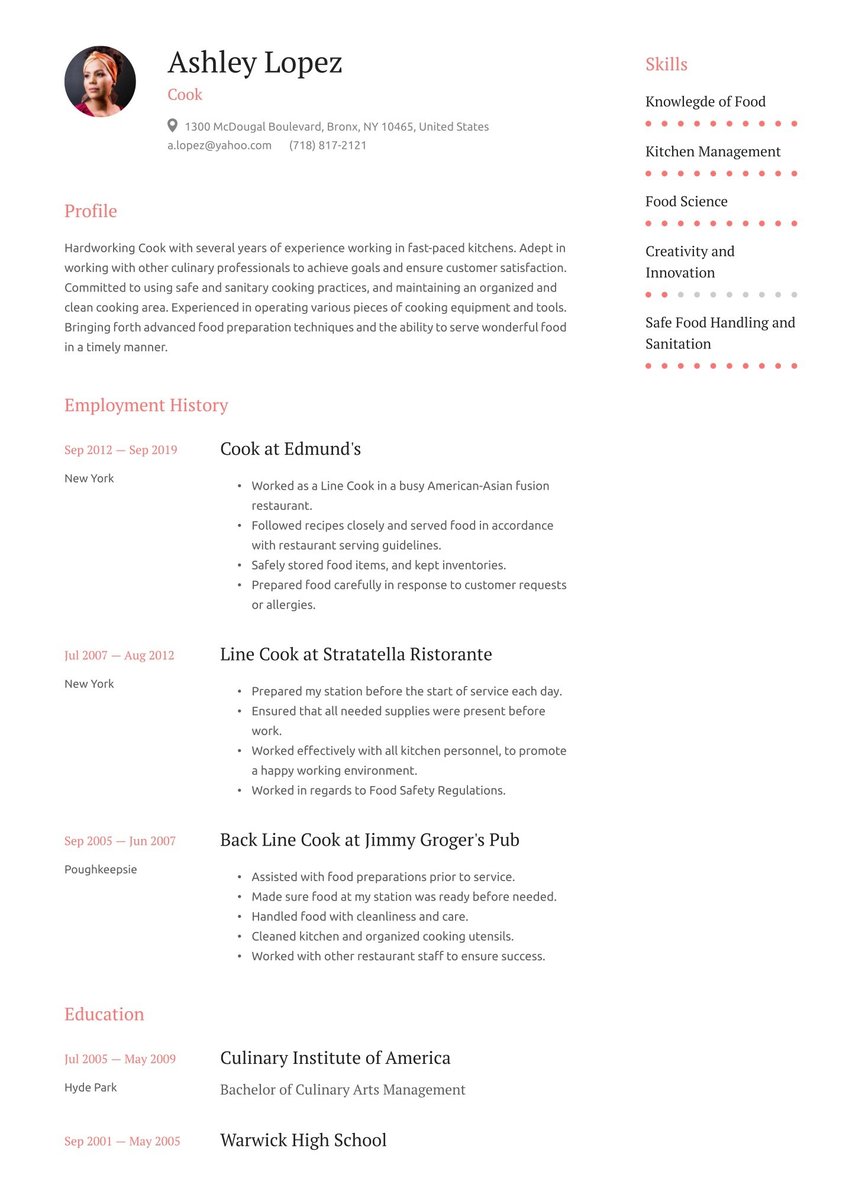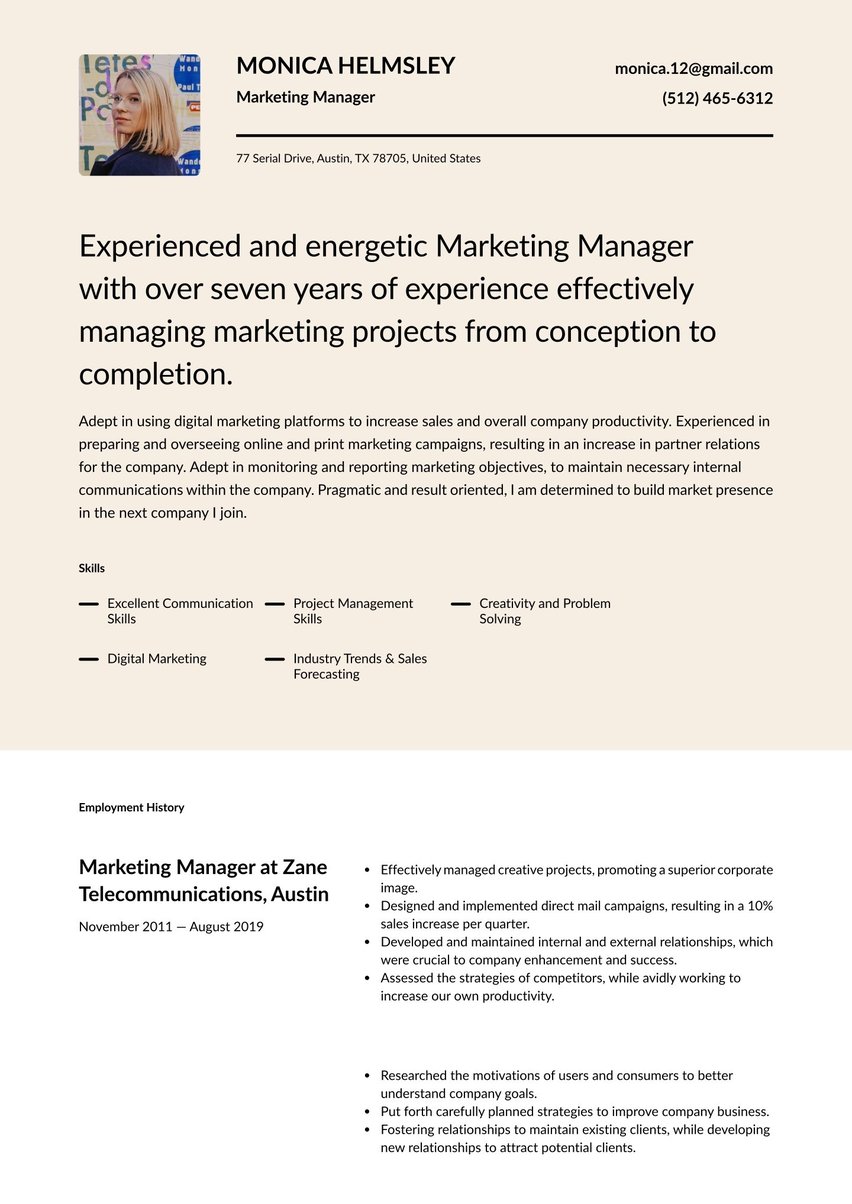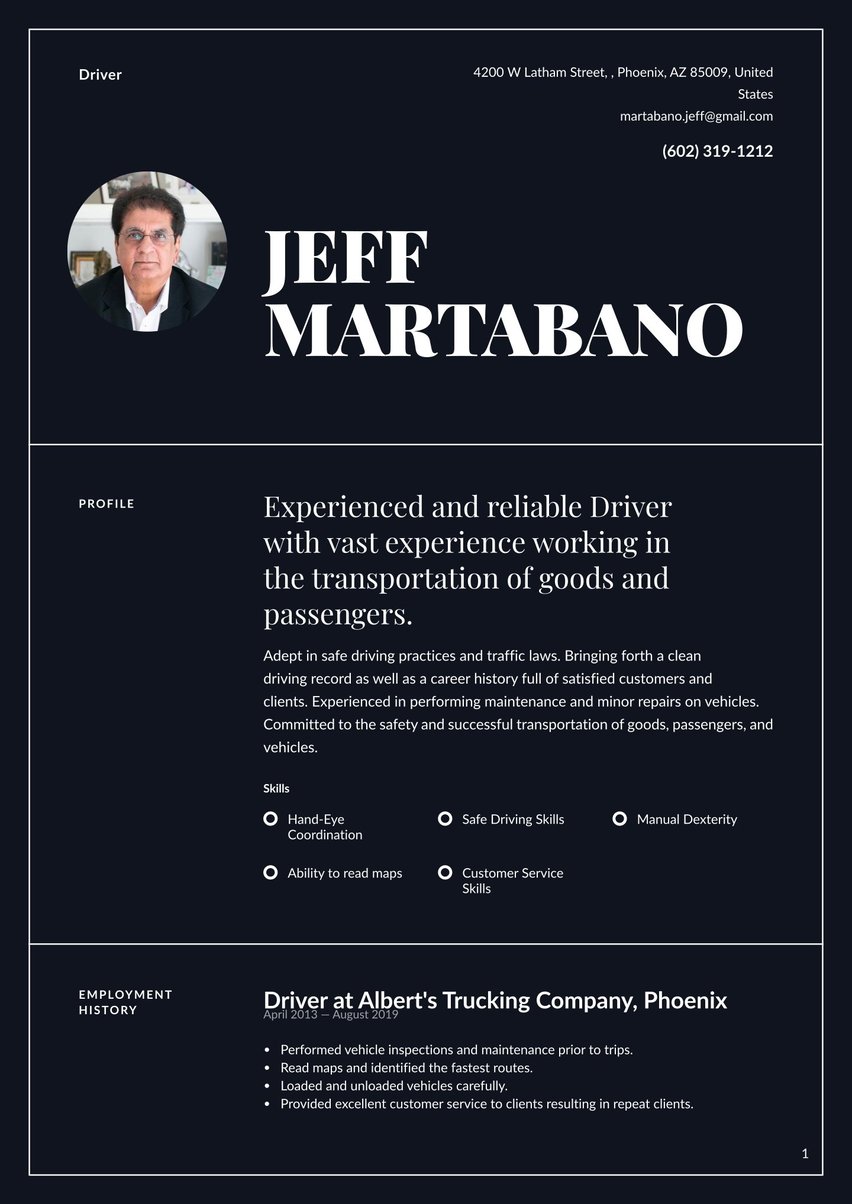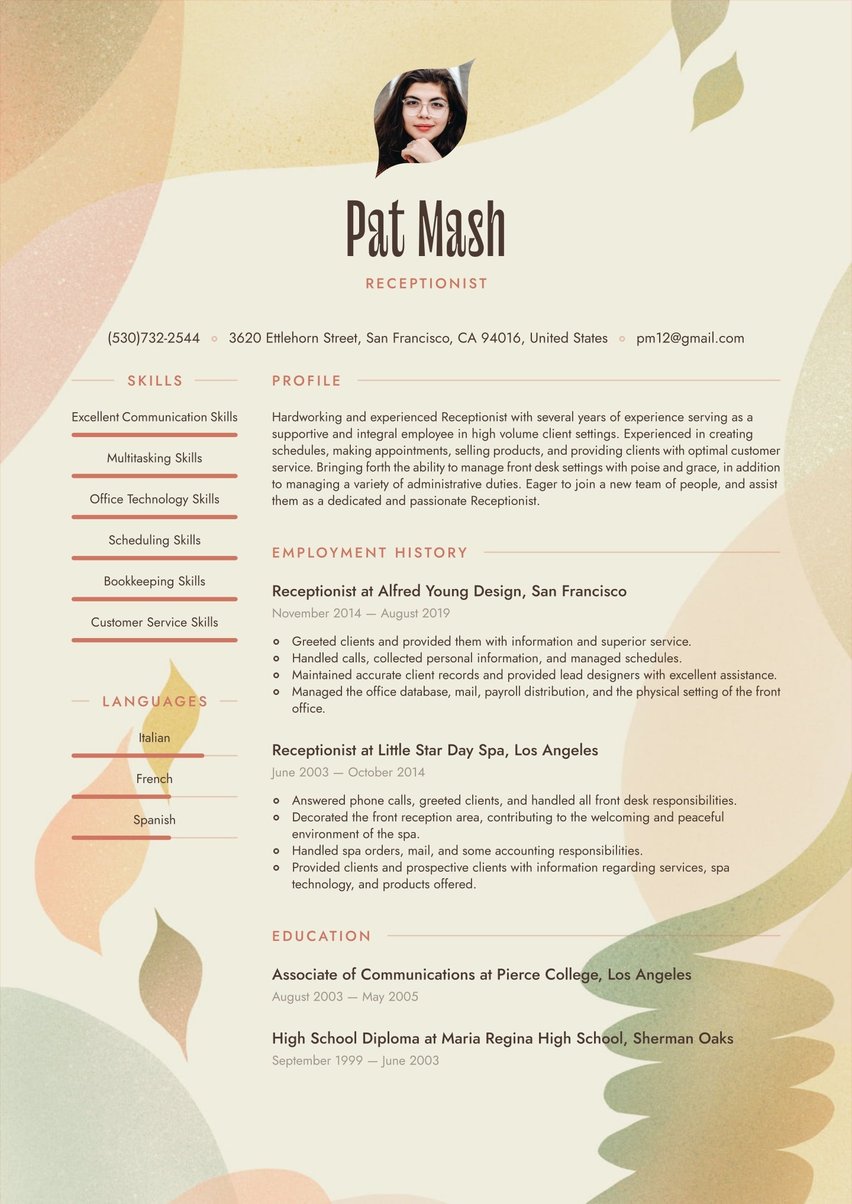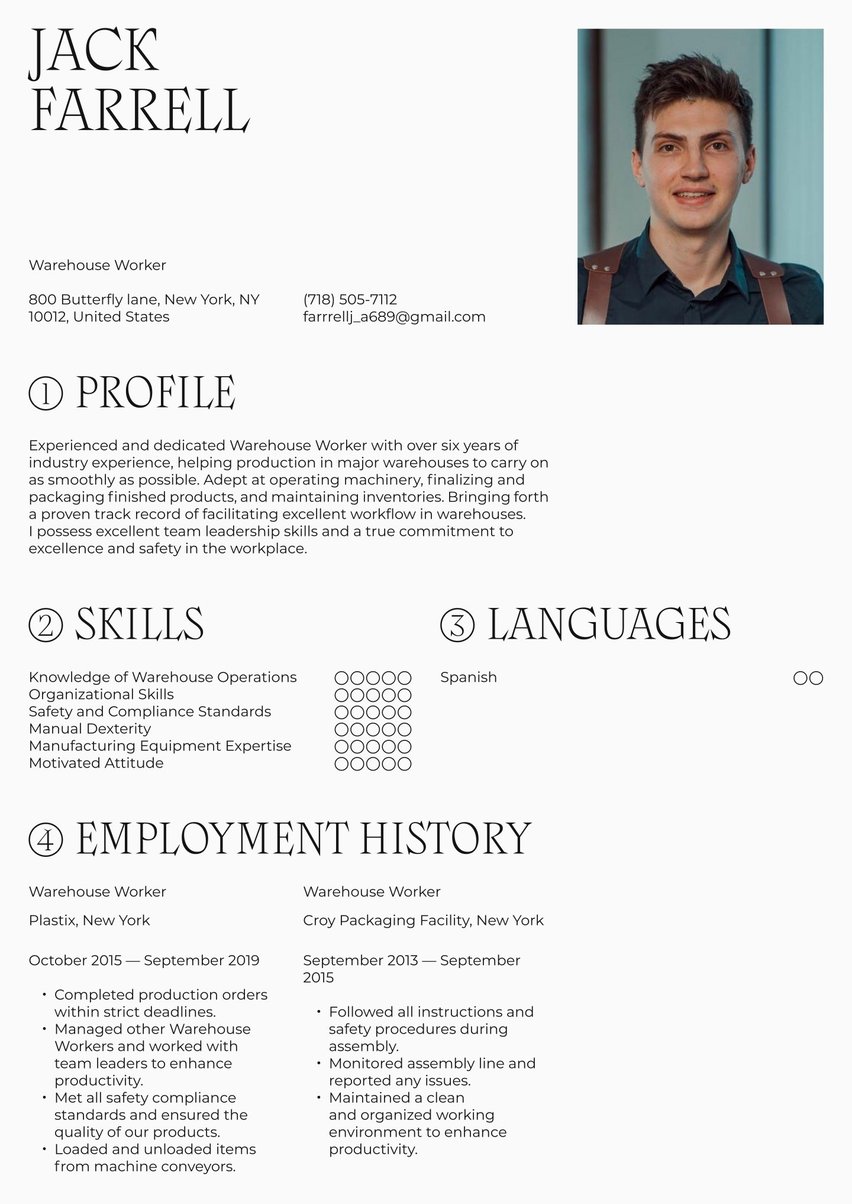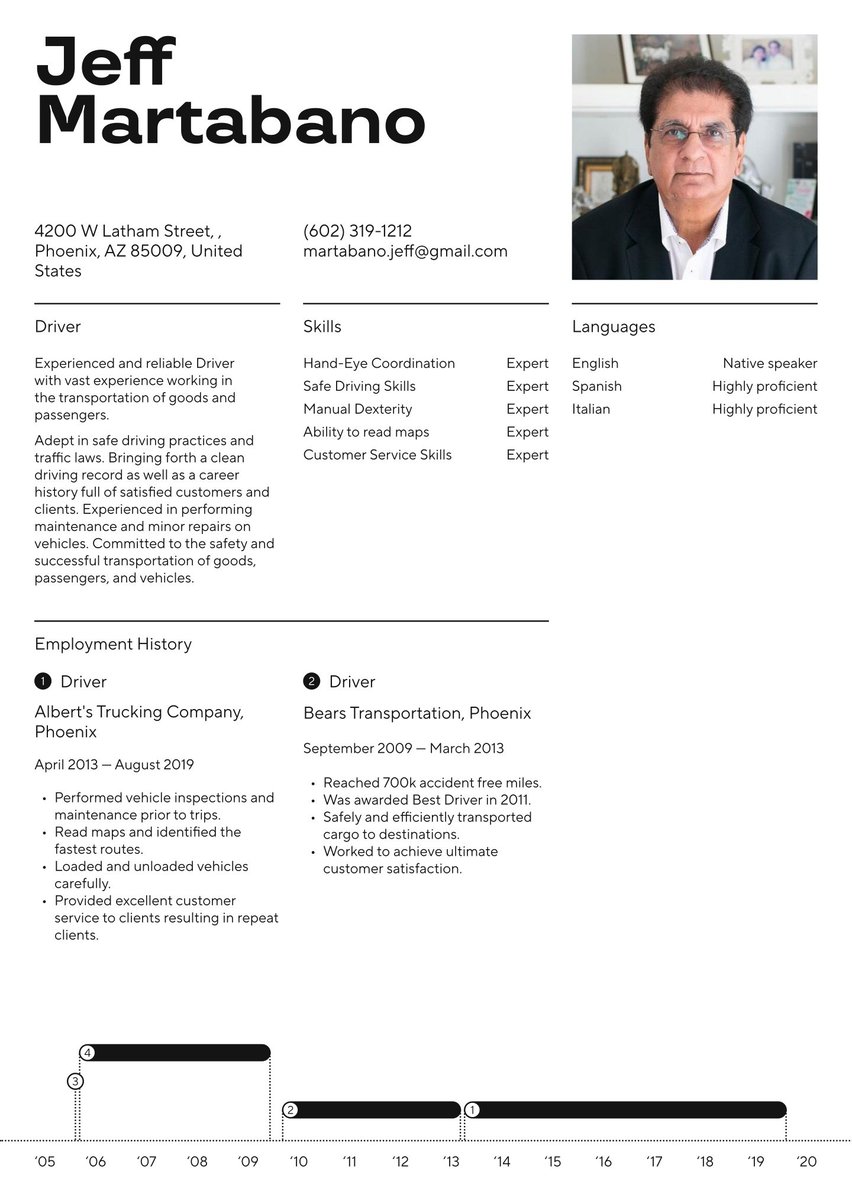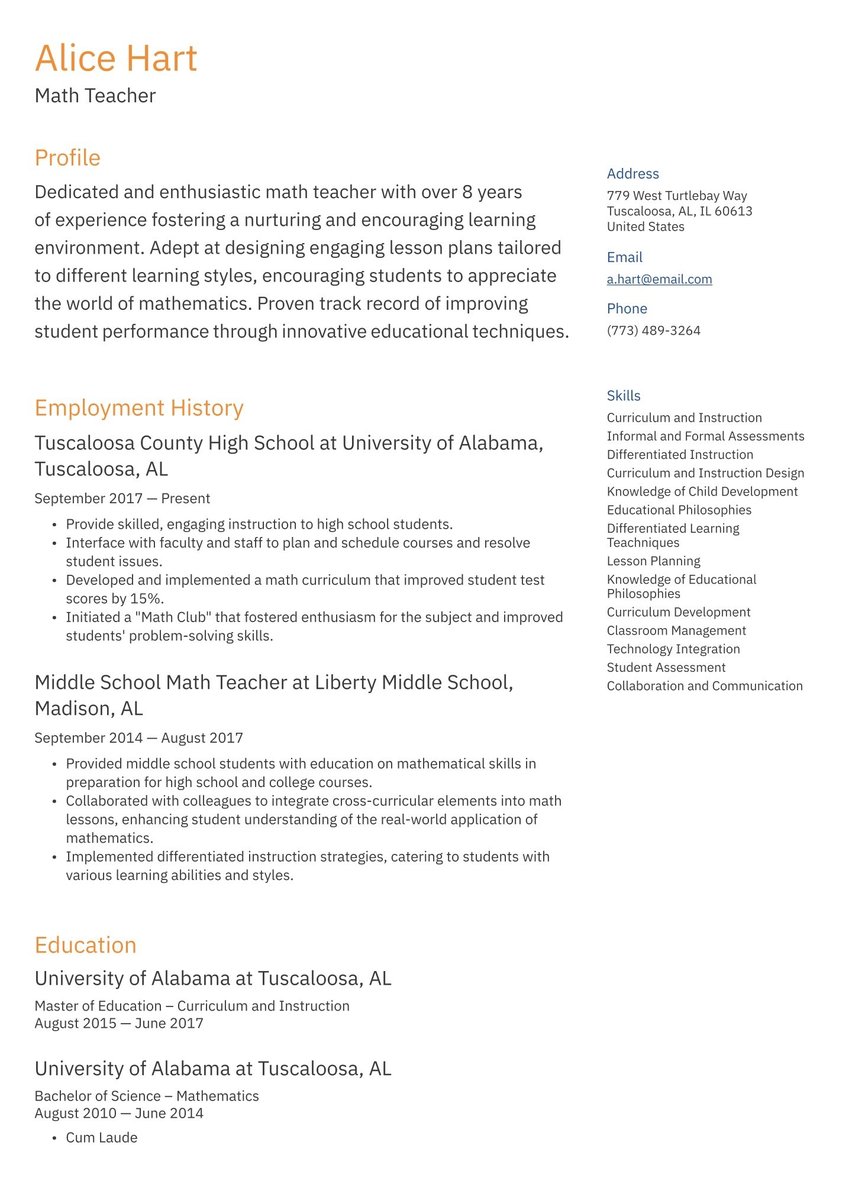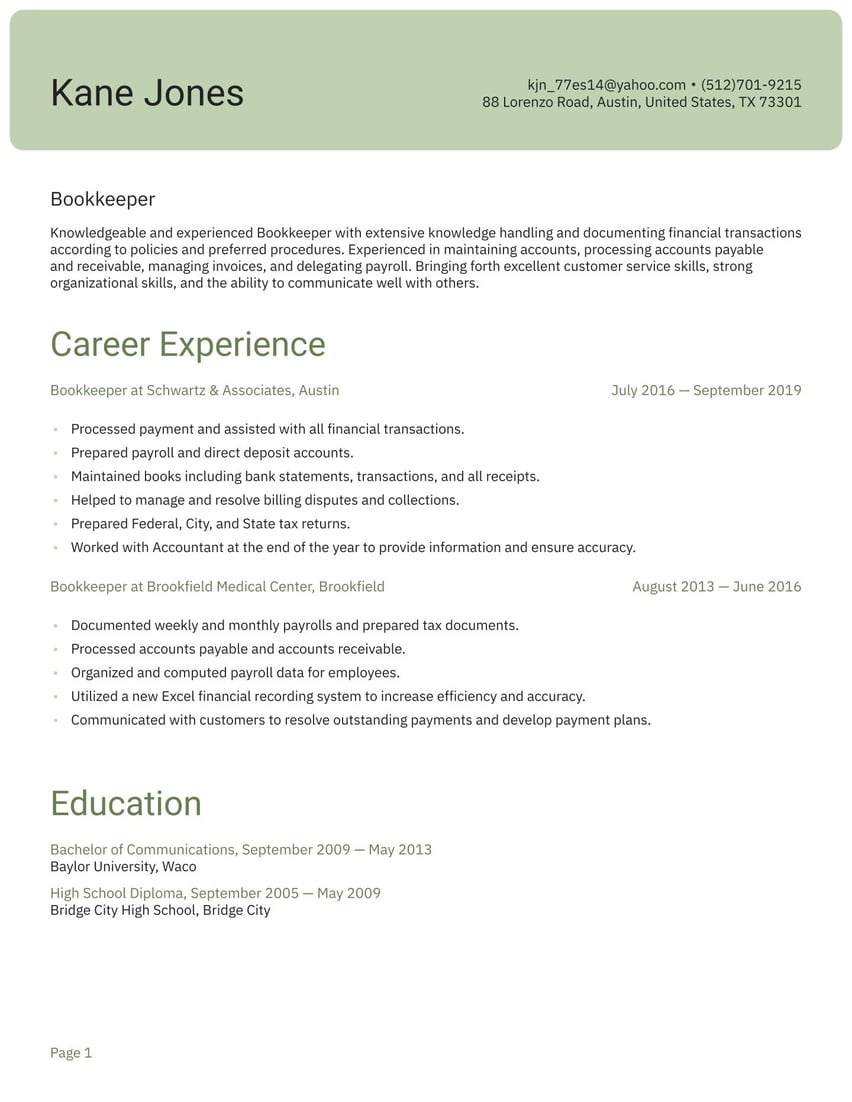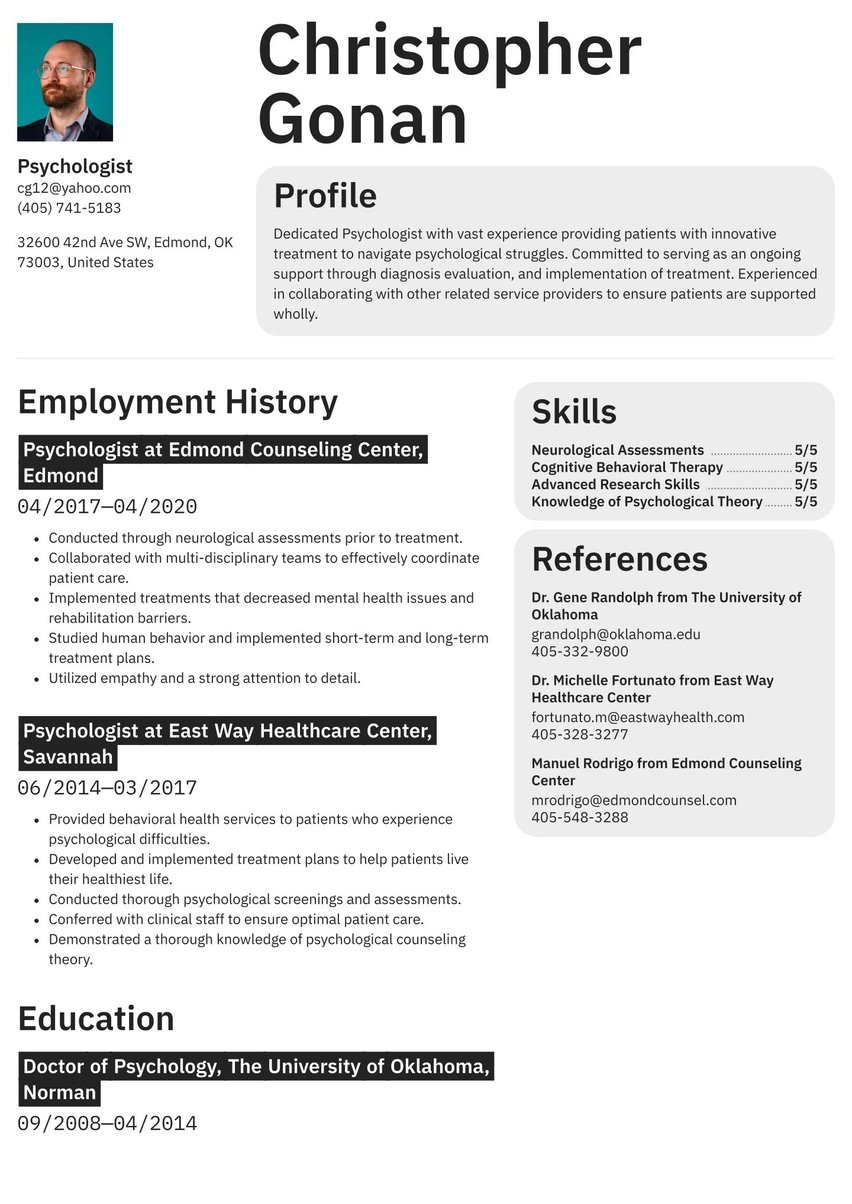A buyer needs to understand their industry to acquire the necessary goods and services for the business. This requires research and analysis, management of vendors, oversight of purchases and orders, inventory management, and compliance with budget restrictions, quality requirements, and other regulations.
Buyer resume examples by experience level
Clearly, buyers have their work cut out for them—but how should you display these talents on your buyer resume? Luckily, you’ll rely on exactly the same skills that make you a talented buyer. We’re here to walk you through a step-by-step process of exactly what to do.
Resume guide for a buyer resume
Seal the deal with Resume.io. Our extensive guides and resume examples cover more than 500 professions, and our resume builder makes it easier than ever to create a compelling resume.
This resume guide and corresponding buyer resume example will cover the following:
- How to write a buyer resume
- Choosing the right resume format for buyer jobs
- How to add your contact information
- The best way to use a summary
- Displaying your buyer experience
- Listing your education and relevant training
- Picking the right resume design/layout
- What the buyer job market looks like and what salary you can expect
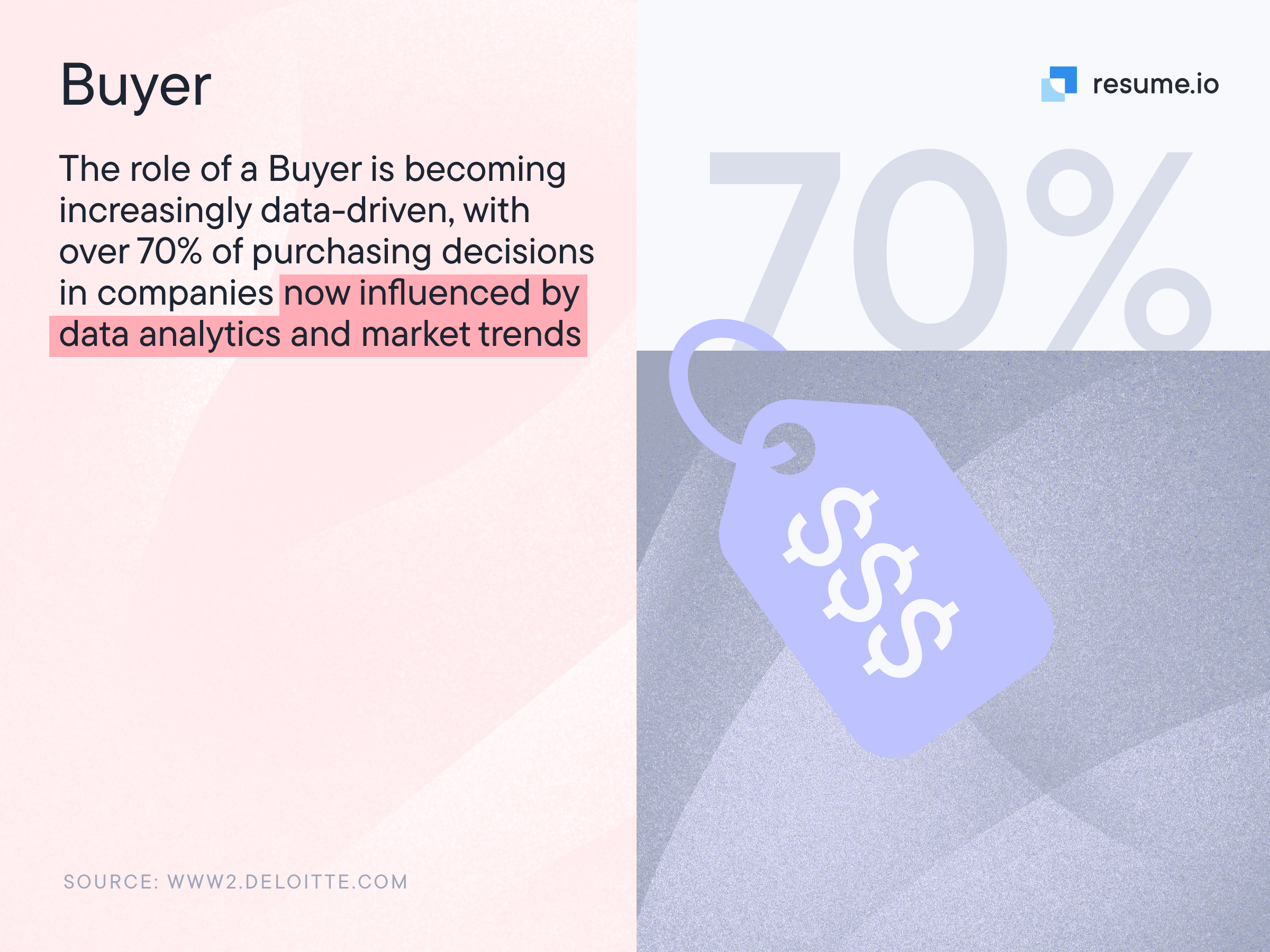
How to write a buyer resume
Buyers must first understand what’s required for the business and then assess the various vendors, suppliers, and prices. In other words, before you can succeed, you need to understand what to do.
This means that the first step in writing your buyer resume is understanding the sections to include. Your resume should contain the following sections:
- The resume header
- The resume summary (aka profile or personal statement)
- The employment history section
- The resume skills section
- The education section
A job application is like a negotiation with a vendor. You want to lay out the details and benefits for both parties, ultimately reaching a mutually beneficial agreement. With your resume, you’re explaining your unique value proposition to the employer and making it clear how hiring you will meet their needs. To close the deal, stick to this formula:
- Highlight achievements, not just responsibilities. If a company is hiring a buyer, they know what a buyer does day to day—but what they don’t know is how you brought value to past organizations.
- Tailor your resume to each job and company, adjusting your style and tone to match the organization.
- Show your professionalism and poise with a buyer resume template that’s polished and streamlined without being fussy.
- Fill your resume with keywords that match the job posting so it’s clear to the reader—whether that’s a recruiter, hiring manager, or ATS algorithm—how you’re the buyer they need to hire.
Optimize for the ATS
An applicant tracking system, or ATS, is a software system that companies use to track and manage their job applicants. If you’ve ever applied to a job through a company’s website, chances are you did that via an ATS.
Advanced ATS tools may include algorithms that help score resumes based on how well they match up with the job posting. They can then rank or otherwise filter to the top those that are the best fit.
For example, a buyer job posting might list requirements like:
- “Buyer”
- “10+ years of experience”
- “Knowledge of inventory management”
- “Vendor management experience”
- “Budget management”
Your buyer resume summary, when integrating the keywords, could read:
“Seasoned buyer with 10+ years of experience. Extensive knowledge of best practices in vendor management, inventory management, and budget management.”
Choosing the right resume format for buyer jobs
Your resume should reflect how you approach your work as a buyer. This means it should be straightforward, professional, and include the right level of detail.
For most buyer jobs, the best resume format is reverse chronological. This means your resume focuses most extensively on your past work history, starting with your most recent job and working its way backwards through your career. This is the best format to show career progression and growth, and it makes it easy for recruiters to understand where you’ve been and where you’re going.
If you’re making a career change or are new to the working world, you can consider a functional format. This resume format puts the focus on your skills, minimizing the attention given to your work history. Or, you can combine the best of both types and use a hybrid or combination format.
Whichever you choose, we’ve got plenty of resume templates in our resume builder. Just select the one that best suits your needs. You can also take a look at the different formats in action in our resume examples.
When it comes to design, your buyer resume should use a professional layout that is simple, elegant, and easy to follow.
Include your contact information
Buyers know that details matter: if you don’t know what to order or you can’t find the supplier’s contact information, it’ll be quite challenging to do your job.
The same is true for your resume: if the recruiter or hiring manager can’t find your contact information, they can’t call you for an interview. The solution to this is a well-crafted resume header. This is where you’ll share your contact information.
Although this section seems simple enough, there are some important best practices you should know.
Do include:
- Full name & title. List your first and last name and the title of the role you are targeting.
- Professional email address. Use a clean email format like [email protected]—not a quirky or unprofessional email address.
- Phone number. List a number where you can be readily contacted, with a professional voicemail greeting, and that is open to new messages.
- Location. List only your city and state. It’s both outdated and unsafe to list your full street address, and your zip code is not necessary. If you’re willing to relocate, note that here.
- LinkedIn. If your LinkedIn profile is active, relevant, and shows your buyer network, include it here.
Don’t include:
- Date of birth: This information is not necessary and could potentially lead to age discrimination.
- Personal details: Leave off details related to your marital status, social security number, passport number, etc.
Tie it all together in a summary
Your resume’s summary should be an overarching narrative of your career success and what makes you a top buyer candidate. These 2-4 sentences offer the most freely written space on your resume, so make it count. Don’t just reiterate what’s already on your resume. Instead, demonstrate your value by tying it all together.
Using action verbs that pack a punch, write a bit about your achievements, accomplishments, and talents. For example, you may include a line stating, “Proven track record of reducing costs by 30% year over year.”
Need inspiration for your summary? Check out our related resumes:
You can find adaptable buyer resume example summaries below:
Recent supply chain management graduate seeking entry-level buyer position. Foundational knowledge in procurement, supply chain, market research, and vendor management. Prior internship experience in multiple industries.
Experienced buyer with over 5 years of experience in procurement and supply chain management. Proven success in strategic sourcing, vendor management, and inventory optimization. Track record of reducing costs by up to 30% year over year, four years in a row. Adept at understanding market trends, developing strong relationships, and driving operational excellence.
Seasoned buyer with 10+ years of experience in procurement and supply chain management, including strategic sourcing, supplier management, and inventory optimization. Exceptionally talented at researching and analyzing market trends, driving quality improvements, and developing strong supplier partnerships. Expert-level skills in negotiation, project management, and budget oversight.
Outline your buyer work experience
To present your buyer work experience, you’ll start by listing your current or most recent job. From there, work your way back 10-15 years. Don’t go much further than that, as the older the job is, the less relevant it is. Plus, the further back you go, the more there is risk of age discrimination.
Underneath each employer heading, you’ll list out concise bullet points detailing your accomplishments in the role. Be as specific as you can and start each bullet with a dynamic action verb: negotiated, achieved, reconciled, improved, increased, qualified, reduced.
Don’t just list the day-to-day duties of your role, however. This is the space to be confident and forward with your achievements, so use your bullet points to demonstrate tangible outcomes and impacts.
For example, it’s easy to write bullet points like these:
- "Managed vendor relationships”
- “Reduced order processing time”
- “Developed purchasing strategies”
Any buyer could write those statements; there’s nothing that calls out the specific value you bring to the table. Instead of vague job duties, think instead about results-based points. Consider the specific impact you had at past jobs: did you save a specific dollar amount or increase efficiency by a certain percentage?
Watch how your resume can transform:
- "Managed vendor and supplier relationships, negotiating contracts to secure optimal prices and achieving 20% reduction in costs.”
- “Reduced order processing time by 30% by introducing new software and automated processes.”
- “Designed purchasing strategies based on analysis of trends and market conditions, achieving a 10% increase in profit margins."
Take a look at the buyer employment history resume sample below:
Associate Buyer at Anthropologie, Seattle
April 2018 - Present
- Manage a $10M+ product category, overseeing assortment planning, inventory management, and pricing strategies
- Analyze sales data, market trends, and customer insights to inform buying decisions and optimize product mix
- Collaborate with cross-functional teams, including design, merchandising, and marketing, to develop and execute seasonal strategies and promotions
Assistant Buyer at Macy's, San Francisco
August 2015 - March 2018
- Assisted in managing a $5M+ product category, supporting senior buyers in assortment planning, vendor negotiations, and order placement
- Conducted competitive market analysis and attended trade shows to identify emerging trends and new brand opportunities
- Developed and maintained strong relationships with key vendors, ensuring timely delivery, quality control, and favorable terms
How to write a buyer resume with no experience
It can be challenging to land a buyer job without direct experience on your resume, but if you know this is your career path, it’s worth the attempt.
To have the best shot at success, focus on your education and transferable skills. Transferable skills are those that you may have gained from roles outside of buying and purchasing, but that will make you a stronger buyer.
For example, you may have strong budget management or negotiation experience, or a history of working closely with vendors, even if it wasn’t as a buyer.
Don’t forget about your education. Most buyer jobs will require a bachelor’s degree, so if you have one, make sure it’s displayed prominently. It’s even better if your degree is in supply chain, business, or something else related.
Include the relevant key skills that make you a great buyer
Your buyer resume should incorporate a skills section that lists your most relevant skills. As a buyer, both hard and soft skills are important, so include a mix of both.
Hard skills may be knowledge of specific software programs, fluency in project management or quality assurance methodologies, or financial acumen.
Soft skills like communication skills, attention to detail, an analytical mindset, and detail orientation are also extremely important in a buyer role.
Our resume builder provides several key skills to choose from, as well as the option to insert your own.
Here’s what the skills box looks like in our buyer resume template.
Key Skills and Proficiencies
This section, however, is not the only place to show your skills. They should appear throughout your resume, especially in the context of specific examples and results.
For instance, throughout your work experience and professional summary sections, highlight your:
- Software skills by listing the systems you’ve used to do your job
- Vendor and supplier management skills by describing improvements you’ve made to supplier relationships or monetary benefits of negotiations
- Inventory management skills by demonstrating how you optimized inventory processes or avoided stock-outs or over-ordering
Look to the job description as a guide for which key skills to include.
Detail your education & relevant buyer certifications
The education section on a buyer resume can be fairly straightforward: in reverse chronological order, list your educational credentials. Because most buyer roles require a college degree, you should be sure to include it here. Assuming you have a bachelor’s degree or higher, there is no need to include your high school information.
However, don’t stop with just your formal degrees. This section is a great place to include certifications, trainings, or internships:
- Training and certifications. Certificates, courses, or training programs that bolster your buyer expertise. For example, certifications through the Institute for Supply Management.
- Internships. Any relevant internships throughout your educational experience.
- Professional development. Memberships in business or trade associations, like ISM or the American Purchasing Society (APS).
Bachelor of Science in Business Administration, Michael G. Foster School of Business, Seattle
September 2011 - June 2015
Pick the right resume layout and design for a buyer resume
Your resume is a reflection of yourself as a professional, so you want to make the right first impression. While the content of your resume is what matters most, the design is the first thing anyone will see.
The design of your resume should grab the reader’s attention without being flashy or gimmicky. This means you should avoid graphics, using multiple fonts or colors, or confusing layouts.
It’s best to use clean lines and straightforward section headings so it’s easy to know where to look. Try to strike a balance between text and white space, as well, so your resume isn’t either overly crowded or too sparse.
While properly crafting a resume isn’t easy, there are ways to make it simpler—like letting our field-tested resume templates handle the hard work for you.
Buyer text-only resume example
Profile
Strategic and detail-oriented buyer with 7+ years of experience seeking a position at Nordstrom to drive profitable growth, cultivate strong vendor relationships, and contribute to the company's reputation for curated, high-quality merchandise.
Employment history
Associate Buyer at Anthropologie, Seattle
April 2018 - Present
- Manage a $10M+ product category, overseeing assortment planning, inventory management, and pricing strategies
- Analyze sales data, market trends, and customer insights to inform buying decisions and optimize product mix
- Collaborate with cross-functional teams, including design, merchandising, and marketing, to develop and execute seasonal strategies and promotions
Assistant Buyer at Macy's, San Francisco
August 2015 - March 2018
- Assisted in managing a $5M+ product category, supporting senior buyers in assortment planning, vendor negotiations, and order placement
- Conducted competitive market analysis and attended trade shows to identify emerging trends and new brand opportunities
- Developed and maintained strong relationships with key vendors, ensuring timely delivery, quality control, and favorable terms
Skills
- Assortment planning and forecasting
- Vendor negotiation and relationship management
- Data analysis and trend forecasting
- Cross-functional collaboration
- Inventory management and pricing strategies
Education
Bachelor of Science in Business Administration, Michael G. Foster School of Business, Seattle
September 2011 - June 2015
Buyer job market and outlook
Unfortunately, the job outlook for buyer roles is not looking up. The US Bureau of Labor Statistics (BLS) projects a 6% decline in overall employment. This decline is largely due to the advancement of automation tools that can take on tasks previously owned by humans.
- The BLS projects a loss of about 38,000 buyer jobs by 2032.
- Still, there are about 45,000 openings projected each year for the next decade, often due to people leaving the industry or the workforce altogether.
What type of salary you can expect as a buyer
According to the US Bureau of Labor Statistics, the median pay for a buyer is $77,180 per year or $37.11 per hour. Overtime is common, so if a buyer is non-exempt from overtime, they should earn additional pay for hours worked over the standard amount.
The industry matters, too. Buyers earn the most in government ($87,900) and company management ($81,280). They earn the least in wholesale ($64,060) and retail ($51,420) trade.
Salary buyer
Key takeaways for building a buyer resume
A career as a buyer lets you experience plenty of variety. One minute you may be assessing inventory needs and the next, negotiating back and forth with a supplier. You also need to have a head for analysis, a drive for quality and compliance, and an understanding of business and the overall market. The skills required for a successful buyer career are the same traits that will help you put your best foot forward with your buyer resume.
Additionally, our online resume builder can help you streamline the process from start to finish, setting yourself up for success.


.jpg)

.jpg)
